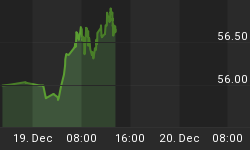The Fed is running out of "good" options. As shown in Chart 1, for the first time since 1995, the real M2 money supply is contracting on a year-over-year basis. Contractions in real M2 typically lead to recessions. Indeed, the last recession occurred without real M2 contracting- its growth just slowed. By the way, the real M2 money supply is a component of the Conference Board's Leading Economic Indicators (LEI) index; the real fed funds rate is not a component of the LEI. I wonder why the Conference Board's economists chose to include real M2 and not the real fed funds rate. Why don't you ask them? And, oh yes, the year-over-year growth in the September LEI slowed to 1.2% -- down from its peak of 10.0% growth in March 2004.
Chart 1
Why does this contraction suggest that the Fed is running out of good options? To answer this question, let's look at why real M2 has started to contract. Chart 2 shows that nominal M2 growth slowed significantly in 2004, but seems to have leveled off at approximately 4%. Year-over-year growth in the Consumer Price Index (CPI), on the other hand, started accelerating in 2004 and reached 4.7% in September - its fastest growth since June 1991. Rising energy prices due to rapid global growth in 2004 and hurricane-related supply interruptions in 2005 have been a major contributor to the acceleration in CPI growth. So, in recent months, the component of real M2 that has resulted in its contraction has been the acceleration in the growth of consumer prices - primarily energy prices.
Chart 2
What's the Fed to do? Two historically reliable indicators of the thrust of monetary policy - real M2 and the spread between the yield on the Treasury 10-year note and the fed funds rate - have lined up on the side policy restrictiveness. If the Fed keeps pushing the funds rate higher, nominal M2 growth could slow and the yield spread could invert. Thus, further funds rate increases could put the Fed in the position of risking a second-half 2006 recession. If the Fed were to pause now in its interest rate hikes, nominal M2 growth might accelerate and the yield spread might widen out, thus reducing the risks of a near-term recession. But, for the Fed to pause now in its interest rate increases would run the risk of "monetizing" the recent energy price increases. That is, if the Fed were to pause now, it would encourage households and businesses to borrow more - ultimately from the Fed's "printing press" - to pay for their higher energy costs. This would mean that the private sector would not have to cut back as much on their purchases of non-energy goods and services. In turn, this would mean that price increases of non-energy goods and services would not slow enough to offset the price increases of energy goods and services. If the Fed were to pause now, it would run the risk of allowing the acceleration in energy price increases to lead to a longer lasting acceleration in the growth of the total CPI.
The Fed's current dilemma is similar to that faced by a central bank confronted with hyperinflation. In the case of a hyperinflation, the real money supply is often contracting because prices are rising faster than nominal money supply growth. The central bank comes under pressure to print money faster in order to get the real money supply growing again. But for the central bank to succumb to this pressure, it would only accelerate price increases. This is not to say that we face the abyss of hyperinflation. We don't. But it is to say that the Fed is running out of "good" policy options. Such is the destiny of central planners.















